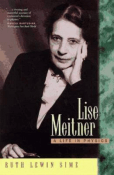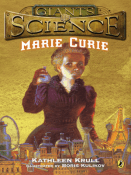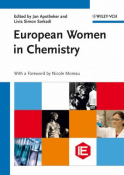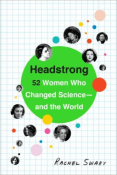Ever since reading The Disappearing Spoon, I’ve had a minor obsession with the periodic table. Each element has its own quirks and its own story. Those stories, of course, involve the people who discovered and studied the elements. For Women’s History Month, I thought it would be interesting to explore the women of the periodic table. Two of them have elements named for them — you probably know a few things about Marie Curie. Others you may never have heard of.
Read on and get to know these awesome scientists and their contributions to the periodic table of elements.

Lise Meitner was the second woman to earn a Ph.D. from the University of Vienna. Max Planck, known as the father of quantum theory, invited her to Berlin to do post-doctoral work. At first, she had to work without pay at the Berlin Institute for Chemistry, and was not allowed to access the laboratories there. Later, she led a section of Berlin’s Kaiser Wilhelm Institute for Chemistry. She went on to study radioactivity and co-discovered protactinium. She made vital contributions to the discovery and understanding of nuclear fission (she even named the process). Her partner, Otto Hahn, received a Nobel Prize, while she was passed over for the honor. Later, element 109 would be named for her: meitnerium.

Marie Curie did receive a Nobel Prize. In fact, she earned two: one in physics and one in Chemistry (no other scientist has won both). This doesn’t mean she didn’t face obstacles, of course. She and her husband, Pierre, both had to spend much time teaching to earn a living while they did their research. They discovered radium and polonium (named after Marie’s homeland of Poland). Marie and her oldest daughter, Irène Joliot-Curie, believed strongly in the medical uses of radioactive elements. Element 96, curium, was named for Marie and Pierre.

Irène Joliot-Curie won her own Nobel Prize in Chemistry, shared with her husband, Frédéric. They discovered how to synthesize artificial elements in the lab, useful in many important medical procedures. She went on to direct her mother’s Radium Institute. Like her mother, she died relatively young due to long-term exposure the radiation.

Ida Noddack was the first scientist to propose the concept of nuclear fission (though she did not call it that; as we know, Lise Meitner named it). Her claims were dismissed at the time, being too far from accepted ideas about nuclear physics. At the Physico-Technical Research Agency in Berlin, Ida and Otto Carl Berg worked to fill in gaps in the periodic table. They successfully discovered rhenium. Later, she worked as a researcher at various universities.

Marguerite Perey earned a chemistry diploma and sought work at Marie Curie’s Radium Institute, where she was interviewed by Curie herself. She got the job and began learning how to isolate radioactive elements. Marguerite went on to discover francium. Following Marie curie’s example, she named the new element after her own homeland, France. She could have earned a Ph.D. easily with a thesis on her discovery, but she did not have the required B.S. yet. She had to spend several years earning that first. After receiving her Ph.D., she became Chair of Nuclear Chemistry at the University of Strasbourg and was the first woman elected to the French Academy of Sciences. Like others before her, she eventually died of radiation-related illness.
There’s a lot more to learn about these great women and their work. They all found success in science at a time when most people in the field were men. They made vital contributions to our understanding of the elements, their properties and uses. Marie Curie remains one of the best-known scientists in the world, but they all deserve recognition.
Discover more about awesome female scientists
Read Magnificent MindsMegan is a Children’s Library Assistant at CLP – East Liberty. When she isn’t reading fantasy, magical realism and/or pretty much any children’s book, she enjoys gaming, watching movies and writing fiction, some of which has been published.

